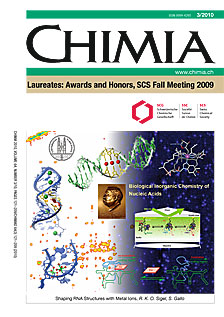Stereoselective Block of hERG Channel by Bupivacaine Scrutinized at Molecular Level
DOI:
https://doi.org/10.2533/chimia.2010.165Keywords:
Bupivacaine, Cardiotoxicity, Docking, Herg-block, StereoselectivityAbstract
In the heart, the hERG voltage-gated potassium channel mediates the IKr current, which is crucial for the duration of cardiac action potential. Undesired block of the channel may prolong the QT interval with increased risk of malignant ventricular arrhythmia called torsades de pointes. Although the molecular determinants of hERG block are intensively studied, stereoselectivity has been poorly investigated. Levo-(S)-bupivacaine was the first drug reported to have higher affinity for hERG than its enantiomer. This study aims at understanding the principles underlying the stereoselectivity of bupivacaine block with the help of molecular modeling. Putative binding modes of levo-(S)- and dextro-(R)-bupivacaine inside an open form model of hERG channel were predicted by docking simulations, allowing a clear depiction of ligand-protein interactions. Estimated binding energies for both enantiomers to wild-type channel are in line with previously published electrophysiology measurements. These results may be considered as a confirmation at the molecular level of bupivacaine stereoselective binding towards hERG. Moreover this information lays the foundations for a structural guideline to filter out potentially cardiotoxic drug candidates in silico.Downloads
Published
2010-03-31
Issue
Section
Scientific Articles
License
Copyright (c) 2010 Swiss Chemical Society

This work is licensed under a Creative Commons Attribution-NonCommercial 4.0 International License.
How to Cite
[1]
L. S. Grilo, P.-A. Carrupt, A. Daina, Chimia 2010, 64, 165, DOI: 10.2533/chimia.2010.165.







